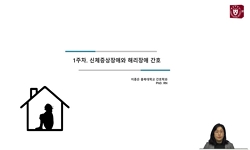Objectives : We examined the effect of sociodemographic factors, cancer, and psychiatric disorders on suicide by gender and age-specific patterns in South Korea. Methods : The study is a case-control study. Claim data was obtained from the national he...
http://chineseinput.net/에서 pinyin(병음)방식으로 중국어를 변환할 수 있습니다.
변환된 중국어를 복사하여 사용하시면 됩니다.
- 中文 을 입력하시려면 zhongwen을 입력하시고 space를누르시면됩니다.
- 北京 을 입력하시려면 beijing을 입력하시고 space를 누르시면 됩니다.


인구사회적 요인, 암, 일부 전신질환 등이 자살에 미치는 영향: 성별, 연령별 분석 = Effect of Sociodemographic Factors, Cancer, Psychiatric Disorder on Suicide: Gender and Age-specific Patterns
한글로보기https://www.riss.kr/link?id=A101437965
-
저자
박재영 (이화여자대학교) ; 채유미 (단국대학교병원 산업의학과) ; 정상혁 (이화여자대학교) ; 문기태 (건강보험심사평가원 진료정보분석실) ; Park, Jae-Young ; Chae, Yoo-Mi ; Jung, Sang-Hyuk ; Moon, Ki-Tae
- 발행기관
- 학술지명
- 권호사항
-
발행연도
2008
-
작성언어
Korean
- 주제어
-
등재정보
SCOPUS,KCI등재
-
자료형태
학술저널
- 발행기관 URL
-
수록면
51-60(10쪽)
- DOI식별코드
- 제공처
- 소장기관
-
0
상세조회 -
0
다운로드
부가정보
다국어 초록 (Multilingual Abstract)
Objectives : We examined the effect of sociodemographic factors, cancer, and psychiatric disorders on suicide by gender and age-specific patterns in South Korea. Methods : The study is a case-control study. Claim data was obtained from the national health insurance database and national death registration database. The number of people who committed suicide was 11,523, which was matched with a control group consisting of ten times as many people at 115,230 selected from the national health insurance and medical aids beneficiaries. The medical utilization of the case group was one year before death and that of the control group was from July 1,2003 to June 30, 2004. Four variables-address, economic status, presence of a psychiatric disease, and cancer-were used in multiple logistic regression analyses. Results : Living in cities or in rural areas showed a greater risk for suicide than living in a metropolitan city. Low economic status, the presence of a psychiatric disorder, and cancer were also statistically meaningful risk factors for suicide. The three major psychiatric diseases, schizophrenia, alcohol abuse, and bipolar disorder, were meaningful in all age groups, but the scale of the odds ratio differed by the age group. Only the psychiatric disorder variable was meaningful in the adolescent group, whereas a psychiatric disorder and economic status were meaningful for the young adult group, and all variables were meaningful for the middle-aged group. A psychiatric disorder and cancer were meaningful in the elderly group, economic status was meaningful for male subjects, and address was meaningful for female subjects. Conclusions : Factors such as living in city or rural areas, low economic status, the presence of a psychiatric disorder, and cancer were statistically meaningful risk factors in suicide. These factors also differed by age group. Therefore, policymakers should establish policies for suicide prevention that are relevant for each age group.
동일학술지(권/호) 다른 논문
-
일개 농촌지역의 초등학생과 주민에서 다환성 방향족 탄화수소와 톨루엔 노출이 요중 Thiobarbituric Acid Reactive Substance 농도에 미치는 영향
- 대한예방의학회
- 김대선
- 2008
- SCOPUS,KCI등재
-
국내 예방의학 분야의 공저자.핵심어 네트워크와 군집 양상 - 대한예방의학회지($1991{\sim}2006$) 게재논문의 분석 -
- 대한예방의학회
- 정민수
- 2008
- SCOPUS,KCI등재
-
- 대한예방의학회
- 이성천
- 2008
- SCOPUS,KCI등재
-
국가 암 발생 데이터베이스에 등록된 암환자의 연령군별 생존율: 기간 분석 방식에 의한 1997년과 2002년도 생존율 비교
- 대한예방의학회
- 임선의
- 2008
- SCOPUS,KCI등재




 ScienceON
ScienceON




